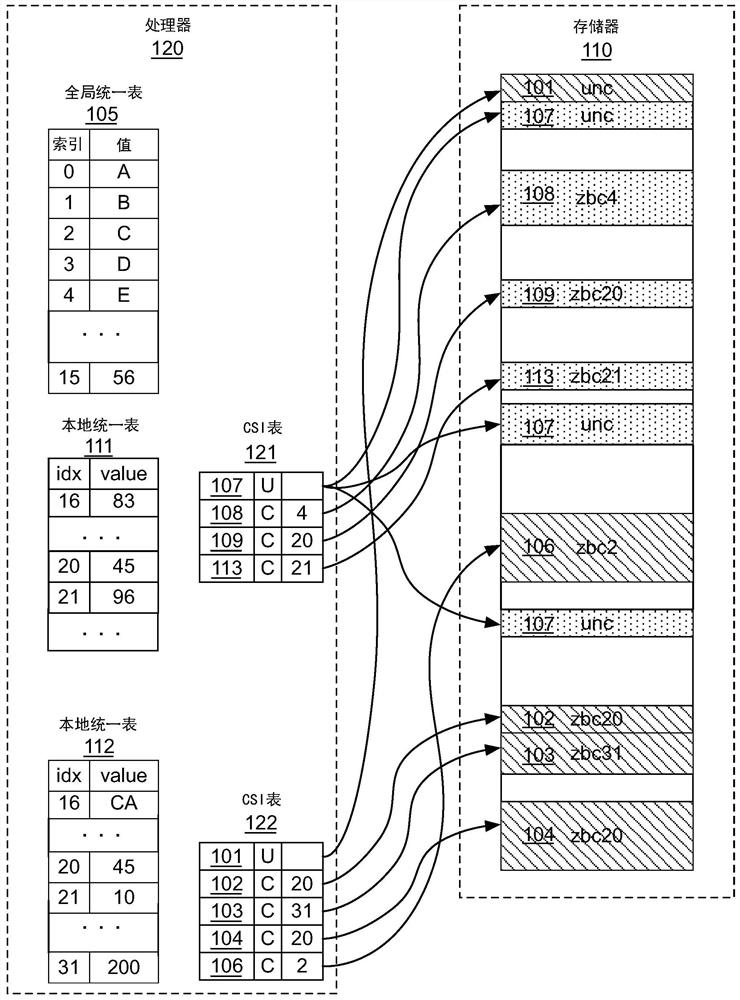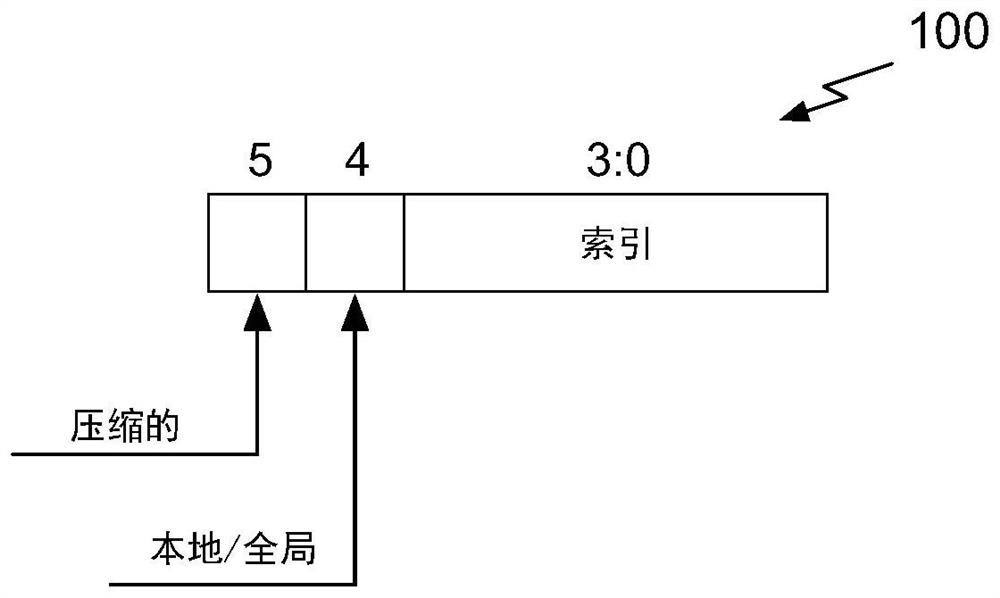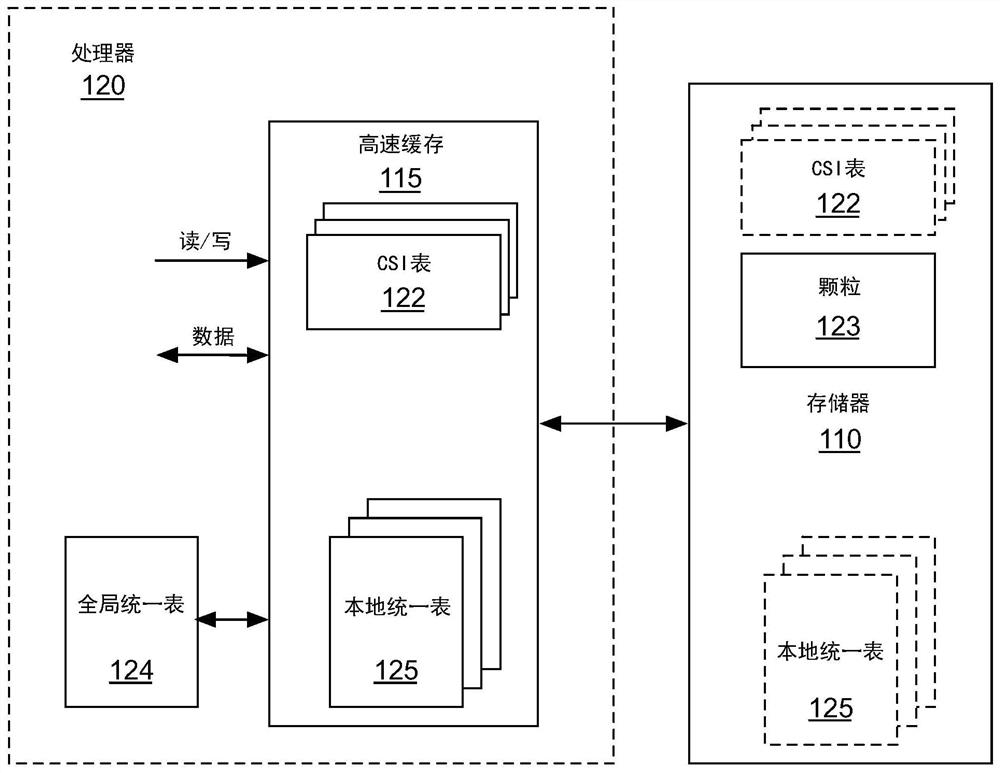Techniques for dynamically compressing memory regions having a uniform value
A technology of memory and memory location, applied in memory system, instrument, memory address/allocation/relocation, etc., can solve the problems of ZBC compression performance limitation and difficulty
- Summary
- Abstract
- Description
- Claims
- Application Information
AI Technical Summary
Problems solved by technology
Method used
Image
Examples
Embodiment Construction
[0020] Conventional Zero Bandwidth Clear (ZBC) mechanisms rely on a single global unified table. Therefore, the number of distinct values available to flush the buffer to a uniform value via ZBC compression is limited to the number of entries in the global uniform table. As described further herein, conventional ZBC mechanisms are enhanced, for example, by extending the number of values available for ZBC encoding beyond the on-chip storage limit.
[0021] Figure 1A An exemplary system including a processor 120 and a memory 110 according to an embodiment of the disclosure is shown. In the context described below, a region is a portion of memory associated with a local uniform table (eg local uniform table 111 or 112). All regions are associated with a global consolidated table (eg, global consolidated table 105). Multiple regions may be defined within a memory such as memory 110 . In one embodiment, all regions are of equal size. In another embodiment, the regions may ...
PUM
 Login to View More
Login to View More Abstract
Description
Claims
Application Information
 Login to View More
Login to View More - R&D
- Intellectual Property
- Life Sciences
- Materials
- Tech Scout
- Unparalleled Data Quality
- Higher Quality Content
- 60% Fewer Hallucinations
Browse by: Latest US Patents, China's latest patents, Technical Efficacy Thesaurus, Application Domain, Technology Topic, Popular Technical Reports.
© 2025 PatSnap. All rights reserved.Legal|Privacy policy|Modern Slavery Act Transparency Statement|Sitemap|About US| Contact US: help@patsnap.com



